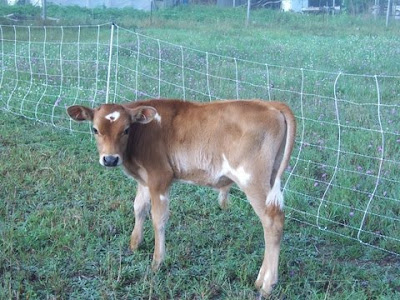Spring is advancing fast this year so I'm get the early things planted outside already. Today I planted Beets, carrots, spinach, lettuce and cabbage. The cabbage I planted in a cold frame because it likes warm temperature to germinate. Also I planted sugar beets and red mammoth mangel wurzels. These are for the animals to eat in the fall and winter months. I planted more of these beets this year than I did last year I planted them where I'm going to plant the corn in one long row about 600 feet long. While I was planting all this by hand with a hoe and enjoying the feel of the damp soil on my bare feet the was quite a contrast on the other side of the road. The commercial crop farm across the way is being leased out to a large agribusiness from down state. They seem to have a lot of money (or should I say debt and farm subsidies? ) by the look of their brand new tractors and matching red pickup trucks! The land is being leased out by one of the farmer families that has been farming this valley since the it was first settled in the late 1800's. It is sad to see this large farm gulp up more land. They own a piece of farm land across road from the land they're renting this land was once two family dairy farms with old growth trees in the fence lines. One farm even had a 10 acre remnant of Virgin forest that was the farm families sugar bush. When this big farm bought it they cut down all the trees to make way for irrigation pivots (an automatic watering system). This is bad for us as a small pesticide herbicide free farm. Last year they spayed their carrot field 20 or more times using a airplane and then when it came time too harvest they did not harvest all the carrots and let them rot in the field, what a disgusting wasteful way to "farm". This year this agribusiness is going to plant potatoes for a seed crop on this rented land for their big potato farm down state. So I guess there will be more foolish spraying than ever this year and what makes it worse it will be right across the road from us.
This is one of our gardens every thing is planted in beds with foot paths in between .
The oats, barley, and red clover are up and growing good now.
This is my propagation garden in it I have planted several heritage wheat, and oat varieties. And also a number of heirloom root crop vegetables that make seed in their second year, including rutabagas, table beet, onions, carrots, sugar beet and red mammoth mangel wurzels. I have never saved seed before from these kind of vegetables, it will be interesting to see how each one goes to seed.
This is the same part of the garden that my blog header picture was taken last summer. It is neat to see how different it looks in the spring!
The giant tractor disking up the field.
Here is a close up view
Here is a picture I took last year of the the pickle field being sprayed. Yes that is a pallet of bee hives for pollination of the cucumbers in the foreground, I'm glad their not my hives no wonder the bees are dying . I think I'm going to have to move my bees out of this pesticide strewn valley this year.

















































